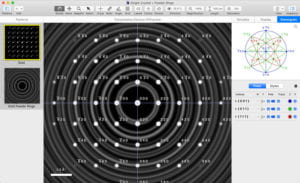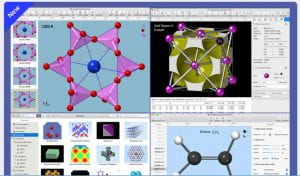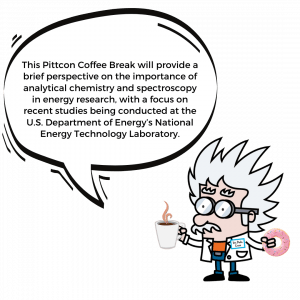Category: Education
New Crystalmaker Software Suite for 2021
 The Crystalmaker Software suite is available for download for students and staff at Georgia Tech! The crystalmaker suite will enable you to create crystal models, simulate XRD patterns, and generate CIFs. For the codes, please contact David Tavakoli (david.tavakoli@mse.gatech.edu) from a GT email address.
The Crystalmaker Software suite is available for download for students and staff at Georgia Tech! The crystalmaker suite will enable you to create crystal models, simulate XRD patterns, and generate CIFs. For the codes, please contact David Tavakoli (david.tavakoli@mse.gatech.edu) from a GT email address.
Safety Videos Required for Returning to Campus
The MCF Staff look forward to welcoming our users back to campus and hope you are all safe and well.
From the office of the EVPR:
Research Ramp-Up Details |
|
|
As part of a careful, gradual return to campus operations, research ramp-up activities are anticipated to begin as early as June 18. Only researchers and staff who must return to campus in order to carry out their job duties should return to work on campus. Supervisors will provide specific direction to their teams on when to return to in-person work. Anyone with questions about when or how they should start reporting to work in-person should, first, ask their supervisor. Required: “Returning Safely to Your Lab” Video If you have been identified by your supervisor to return to your lab, or if you have been working in one of the labs that has remained open, you will be required to watch the “Returning Safely to Your Lab” videos. The six-part module will include what you can expect, recommended safety precautions, cleaning and disinfection best practices, and proper use and disposal of PPE, among other helpful tips for best ensuring your safety and the safety of others. Video Instructions:
|
|
Webinar: Focus on Battery Research: Studying Battery Cathode Materials Using X-Ray Diffraction
Tuesday, April 22: 10:30-11:30AM.
The cathode in a lithium-ion battery undergoes unique electrochemical reactions as lithium enters and leaves the atomic structure of the intercalated lithium compound. The intricacies of this reaction are one source of degradation and, therefore, an opportunity to improve performance. X-ray diffraction and scattering is well-suited to study these atomic phase changes, as well as a tool to understand and optimize the pathways that lithium uses to move through the cathode. However, studying battery materials requires special considerations that are different than the routine powder diffraction measurement.
This webinar, hosted by Malvern PANalytical will review the information that X-ray diffraction and scattering provides and discuss special considerations for experimental design such as selecting an X-ray tube, measurement geometry, and sample holder. We will then show examples of how these considerations are applied to cathode material analysis, including Rietveld refinement to quantify phase mixtures and atomic structure, pair distribution function analysis to examine local structural defects, and phase analysis of thick (10mm) commercial pouch cells, and in operando analysis of LFP based batteries to track phase changes during discharge and charging.
You can sign up for it here.
Speakers
Dr. Scott Speakman – Principal Scientist Malvern Panalytical
and Dr. Reeves-McLaren of The University of Sheffield
More information
– Who should attend?
Those working within the field of battery research or manufacturing or anyone interested in X-ray Diffraction of materials.
– What will you learn?
You will be educated on the X-ray diffraction and scattering application of lithium-ion batteries, including: Electrochemical reactions and atomic phase changes, with discussion on the special considerations needed for this application.
SingleCrystal for Mac and Windows is now released!

The client for SingleCrystal is now out of Beta and available for GT users! If you would like the license, please send an email to David.Tavakoli@mse.gatech.edu from your GT mailing address!
As a reminder, all of the Crystalmaker software suite is available for Georgia Tech and we hope that you are well, safe, and healthy!
From the classroom to the laboratory to the synchrotron: SingleCrystal is the easiest way to visualize and understand diffraction properties of crystals. SingleCrystal 4 lets you simulate multi-phase X-ray, neutron and electron diffraction patterns, display reciprocal lattice sections and construct stereographic projections of planes or vectors. By combining a simulated pattern with an observed diffraction image, you can auto-index the pattern and determine the orientation of your crystal.
Shared User Facilities Will be closed at 5:00PM, Thursday, March 19th, 2020
All Georgia Tech shared-user facilities will be ramping down research activities in response to the ongoing COVID-19 threat.
To comply with the directive from our administration, the MCF will close at 5:00PM this Thursday. All characterization work needs to be complete by 3:00 pm on Thursday without exception.
Equally importantly, please make sure to recover any data that you need to work remotely before that time.
There is no announced date about when the MCF will reopen, so please check Georgia Tech news regularly.
Further details and updates about the impact on research can be found here, and we will be sending SUMS/email announcements as updates occur.
Updates on the Georgia Tech community and the Covid-19 virus can be found here along with a FAQ.
In situ heating holder has been installed in Hitachi HD2700
We recently purchased an in situ heating holder from Hitachi and installed it in the aberration corrected STEM Hitachi HD2700. The heating temperature can increase up to 1200C. The in situ heating experiments performed in the aberration corrected STEM can allow you to directly observe the phase transformation, nanoparticle crystallization and growth, atomic cluster or single atom rippening, phase segregation, elemental homogenization, and many others at atomic scale. Currently we hold two types of heating chips w/ or w/o hole in thin SiNx membrane. But the hitachi company offer many selections of heating chips available to buy in small quantity i.e. 5/pk.
If you need to know anything more about the heating experiment or training in the STEM, please contact Mengkun Tian.
Webinar – XRD Masterclass 1 – Characterization Of Amorphous API
Webinar from Malvern PANalytical – XRD Masterclass 1 – Characterization Of Amorphous API
Small molecule drug products often face multiple development challenges, common amongst which are those relating to solubility, stability and manufacturability.
The Developability Classification System (DCS) provides useful guidelines for selecting a formulation technology, based on assessment of the drug’s fundamental properties and dose expectations. APIs which fall under Class 1 (good solubility, good permeability) were discovered and delivered to the market early on.
Nowadays, the majority of small molecule drug candidates are poorly soluble and belong to Class 2 (a & b). For these molecules, solid-form screening and new formulation types are required to create competitive pharmaceutical products.
In the search for more soluble or bioavailable forms, different types of drug formulations are being considered, including nanoparticles, amorphous solid dispersions, co-crystals and drug carrier systems. In this webinar, we’ll focus on amorphous formulations and address the following questions:
• Are amorphous compounds which are obtained in different experimental conditions the same?
• Are they free of nano-crystalline material and are they truly amorphous?
• What are the best ways of quantifying low and high amorphous content?
• How we can we use X-ray diffraction to answer these, and more, questions?
The MCF will be playing this webinar in the MCF Lobby but if you would like to register for this and watch it on your own computer, you can register here.
Date: February 20 2020
Time: 10:30 – 11:30
Crystalmaker Software Suite for 2020
The MCF has renewed the site license for the Crystalmaker Software Suite (Crystal Maker, Single Crystal, Crystal Diffract)
- CrystalMaker – crystal/molecular structures modelling, animation
- CrystalDiffract – x-ray & neutron powder diffraction
- SingleCrystal – single-crystal x-ray, neutron & TEM diffraction
For more information about what the software is capable of, please visit the company website here.
OIT has updated their website with the new codes for 2020 but you can also email David.Tavakoli at mse.gatech.edu from a gatech email address for them as well.

Webinar – Malvern PANalytical demonstration of Empyrean Series 3
The MCF will be showing a webinar on the new Malvern PANalytical Empyrean in the lobby tomorrow, Wednesday, December 18, 2019 from 10:30-11:30AM,
DEMO AT YOUR DESK – FLOOR STANDING XRD – THE EMPYREAN 3RD GENERATION
Join us for a demonstration of the New Empyrean 3rd generation X-ray diffractometer. Like no other system available, the Empyrean is designed for now, and for years to come. A fully automated series of 6 samples will be demonstrated using several different measurements types, including reflection geometry, SAXS, 2D transmission, texture, residual stress, thin film reflectivity, and grazing incidence XRD. The Optics enable the analyst a large variety of measurements without manual intervention. The predefined batch function with data collector has the programming power to switch between measurement types seamlessly. The world of materials science is constantly changing and the life of a high performance diffractometer like the Empyrean 3rd generation will deliver results that save time and effort,as well as, ensure accuracy of the experimental set up.
- Who should attend?
– Anyone interested in XRD and the innovation of the floor standing X-ray diffraction platform
If you wish to watch this demonstration at your own desk or elsewhere, you can register for it here.

